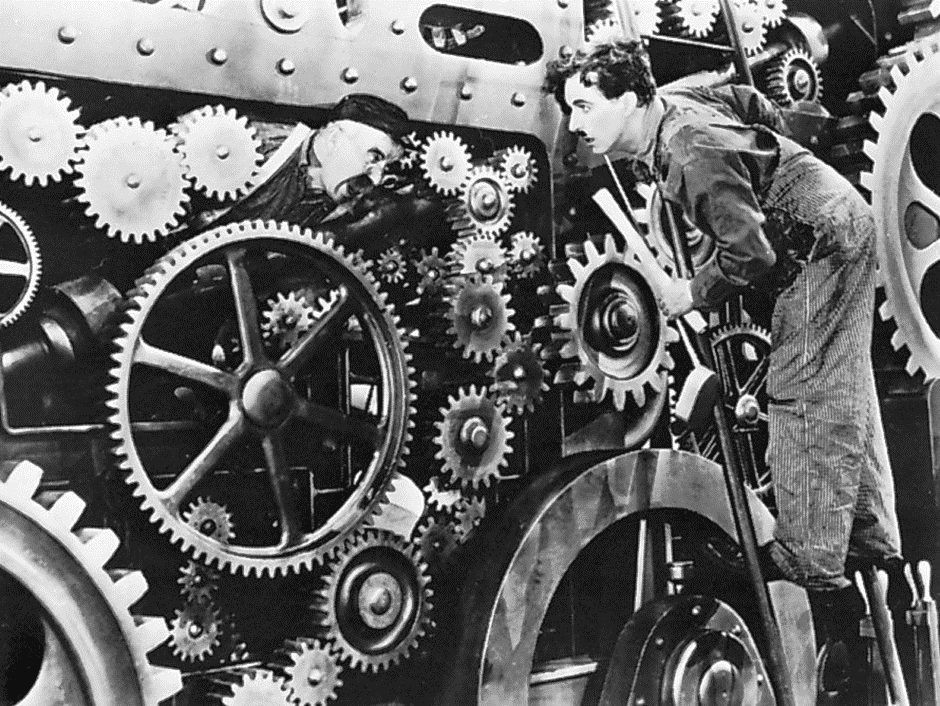Social Issues in Charlie Chaplin’s “Modern Times”
Modern Times denoted the last screen appearance of the Little Tramp - the person which had brought Charlie Chaplin world recognition, and who stays the most remembered fictional picture of an individual throughout the entire existence of art.
The
Tramp character is charming. In spite of the fact that he commits innumerable
errors like inadvertently sending a boat off to the ocean or getting gulped by
a plant machine-he adds a layer of social critique. Regardless of his
agreeableness, the Tramp generally appears to end up in terrible circumstances.
For instance, he gets captured a few times all through this film, once in light
of the fact that he is associated with being a socialist, which isn't true. By
having the Tramp be so authentic and agreeable, it proposes that he isn't the
issue. Society is.
The
world from which the Tramp took his goodbye was different from that into which
he had been conceived, twenty years sooner, before the First World War. Then he
had shared and represented the difficulties of all the oppressed of a world
just barely arising out of the nineteenth century. Modern Times observed him
confronting different problems in the repercussions of America's Great
Depression, when mass unemployment matched with the huge ascent of modern
automation.
This
film also came during the "red alarm," when Americans dreaded leftism
and socialism, or, in all honesty, anybody thoughtful to laborers and work. Socialism
was attacked during the 1930s, however there was wariness with capitalism. If
the Great Depression showed anything, it showed that capitalism can come up
short. It can also be a framework that dehumanizes individuals.
Factory Worker, currently one of the largest numbers adapting to the issues of the 1930s, which are not so different from tensions of the 21st century - poverty, joblessness, strikes and strike breakers, political prejudice, monetary disparities, the oppression of the machine, narcotics. The film's foreboding opening title - "The story of industry, of individual enterprise - humanity crusading in the pursuit of happiness" - is trailed by an emblematic juxtaposition of shots of sheep being grouped and of laborers spilling out of a factory. Chaplin's personality is first viewed as a laborer being made insane by his dull, brutal work on a conveyor belt and being utilized as a test subject to test a machine to take care of laborers as they work. This topic of innovation capturing and oppressing man is underscored in the initial part of the film, which happens in a peculiar industrial facility where all laborers are checked and administered by goliath Orwellian screens. Besides, the people work at the speed of the machines, a speed that is changed a few times to comic impact and results in a scene in which the Tramp encounters a mental meltdown and starts to torque everything under the sun that seems to be a nut, including his collaborator's noses, the buttons on a lady's dress and a fire hydrant. While this scene works superbly on a simply funny level, it additionally endeavors to uncover how such dull, technician work, that requires no inventiveness or thought, dehumanizes individuals.
From
this, the film moves out of sci-fi to human dramatization as it looks at and
investigates the more extensive subject of American culture and society during
the economic crisis of the early 20s. It is during this segment we are
acquainted with the film's second most significant person - the Gamine - an
ingenious and vigorous youthful vagrant who, related to the Tramp, delineates
the human expense of the Great Depression. Through them, we are shown a nation
destroyed by poverty and distrustfulness, in which survival is at best
precarious, and everyday citizens end up helpless before their general
surroundings. Together they go through a bunch of misfortunes including various
fights with the police, an energetic night spent in a retail chain and a
pleasantly heartfelt scene that spoofs wedded life wherein the two-play house
in a broken-down cottage. Yet again the film finishes with the two characters
off of business and back out and about, with the Tramp guaranteeing Gamine that
all will be well. It is in this manner that the last part of the film embodies
the general message of Modern Times, however the significance of the Tramp
himself; that salvation and joy is to be tracked down eventually in trust and
human inventiveness and the opportunity of the person.
Chaplin's
influential thought has endured 85 years. Entertainment can remain as a mirror,
permitting us to see into the mentalities and stresses of any time span. While
it can provide us with a superior comprehension of a period, it can likewise go
about as an ageless asset of self-reflection, where we can view our general
public today and check whether things have moved along.
Have
things endlessly changed enough? "Modern Times" actually prompts us
to ask the tough questions, however it additionally reminds us to smile at
every dawn.





Comments
Post a Comment